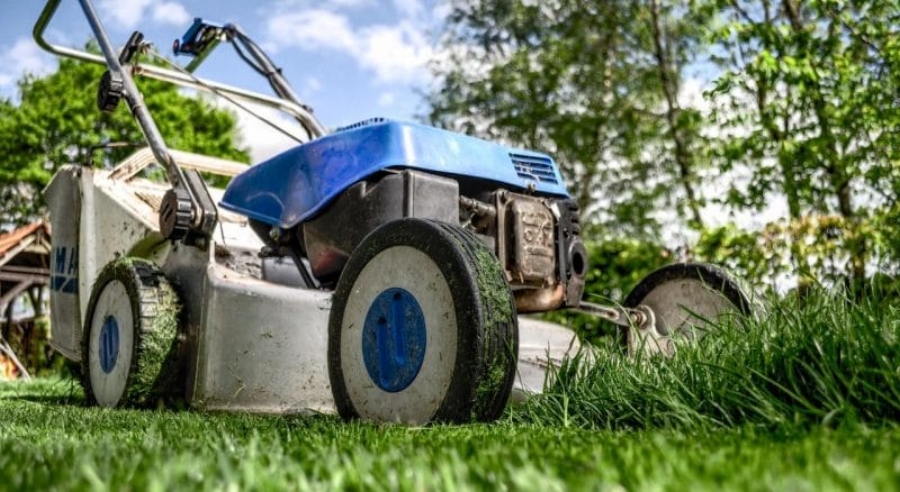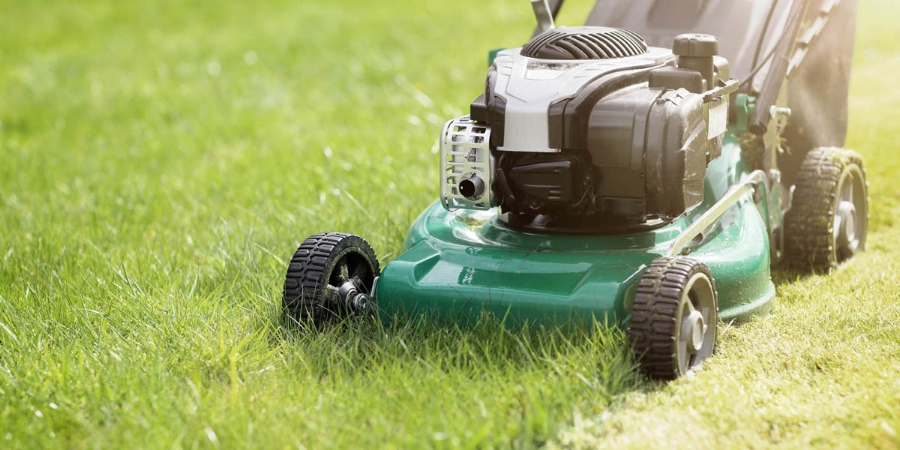Best for Hills: Walk Behind Or Stander (What Is The Best Mower?)
Would you like to move forward or stand your ground? This is a tough decision to make for many homeowners. Whether their ideal choice is a walk behind mower for better navigational control.Or a stander or stand-on mower for covering larger areas. The survival of the toughest is not so simple after all.
But to better understand what works on both levels. You need to know a little about a walk behind mower as well as a stander. This Best for Hills: Walk behind or stander article might help.
Best for Hills: Walk Behind or Stander
Mowing a hill is not easy work. If you break it down, you’re mowing a slope that is steeper than a foot’s incline. And such slopes require constant landscaping to prevent erosion. Having said that, you need to choose the right mower for the job!
Walk Behind Mowers
Walk behind mowers have a self-propel functionality. They make mowing easy because of their smooth navigational stability. You don’t want to go up or down a slope without support. And a walk behind mower takes the risk out of it.
You won’t find yourself aggressively pushing the machine up. Or losing control of its weight on your way down! With a walk behind mower, you get stable wheels and a self-lock mechanism. A gentle push is enough to take control of the mower.
Stander
A stander, or stand-on mower, is more energy efficient than the walk behind mowers. This is because they can cover more ground in less amount of time. Expert landscaping companies use a stander to get most of their work done.
For homeowners, a stander can have its unique benefits too. They work in small and large spaces. They are generally more energy-efficient to use.
Best for Hills: Walk Behind or Stander – Which is better?
In my professional opinion, a walk behind is more suitable for hills. It gives you more control, ergonomic functionality, and less fatigue. You don’t have to rely on a strong-hand to get the job done.
Investing in the best walk behind mower for hills is enough to get you started. Since recent times, companies are establishing more efficient standards for walk behind mowers.
These standards give mowers a compact and ergonomic design. The kind that matches up to the striking performance of standers!
Stand-on mowers tilt when going up a hill. This accounts for damages to both the machine and the grass. And it can pose a safety hazard for the person operating the machine. Another obstacle in the way of standers for hills is the grass height.
If the grass is higher than normal, the stander can clog and delay the cutting process. It would be driving a motorcycle over a pavement lined with thick rocks. Loud, shaky, and simply uncomfortable. You don’t want that!
Walk behind mowers come with a swift wheeling system. This calls for stability as much as balance on uneven grounds. The mower slows down during sharp turns and on slopes. It is more time-consuming to use walk behind mower. But this is still better than using a stand-on mower.
Here’s what you need to consider about walk behind mowers:
Mower size: For a small hill, you need a compact and ergonomic walk behind mower. This makes handling easy and effective. And storing a walk behind mower this compact takes lesser time.
Deck size: If you opt for a compact mower, consider its deck size. The deck size can impact maneuverability. The surface of the deck is equal to the surface of the grass-covered under the mower.
Power: Do you want a gas or electric walk behind mower? If you’re cutting thick and long grass, you need a strong power source. You will need an electric mower for the job. A gas-powered mower is good for handling large areas. But it requires constant refueling while electric lawnmowers need frequent recharging.
Maintenance: Different types of walk behind mowers demand different repairs and upkeep. In order to keep them running efficiently, you need to decide on the right price. Which mower has the strongest deck? What is the size and width of the blades? Is the walk behind mower on warranty? All these factors affect the maintenance of a walk behind mower for hills.
Key Takeaway
While walk behind mower is the right fit for hills. Where does that leave a stander? A stand-on mower is good for hills with less than a foot’s incline. So you can handle the weight of the mower.
Thanks to the introduction of different kinds of stand-on mowers. You can choose an ergonomic and effective one for your needs. A compact and affordable mower is not that hard to find. But knowing how to mow a hill is essential.
About the author:
Chris Miller aims to provide the most informative and recent news about power tools and all such equipment. He focuses on not only the tools but getting the technique right too. His reviews, comparisons, how-tos, and other formats of articles are proof of that. Once you read his work, you don’t take time to realize how genuinely fond he is of all things mechanical and physics.
Sources:
1. https://www.wrightmfg.com/articles/choosing-between-a-walk-behind-and-a-stand-on-mower/
3. https://www.hunker.com/12003335/choosing-a-riding-lawn-mower-for-hilly-terrain




